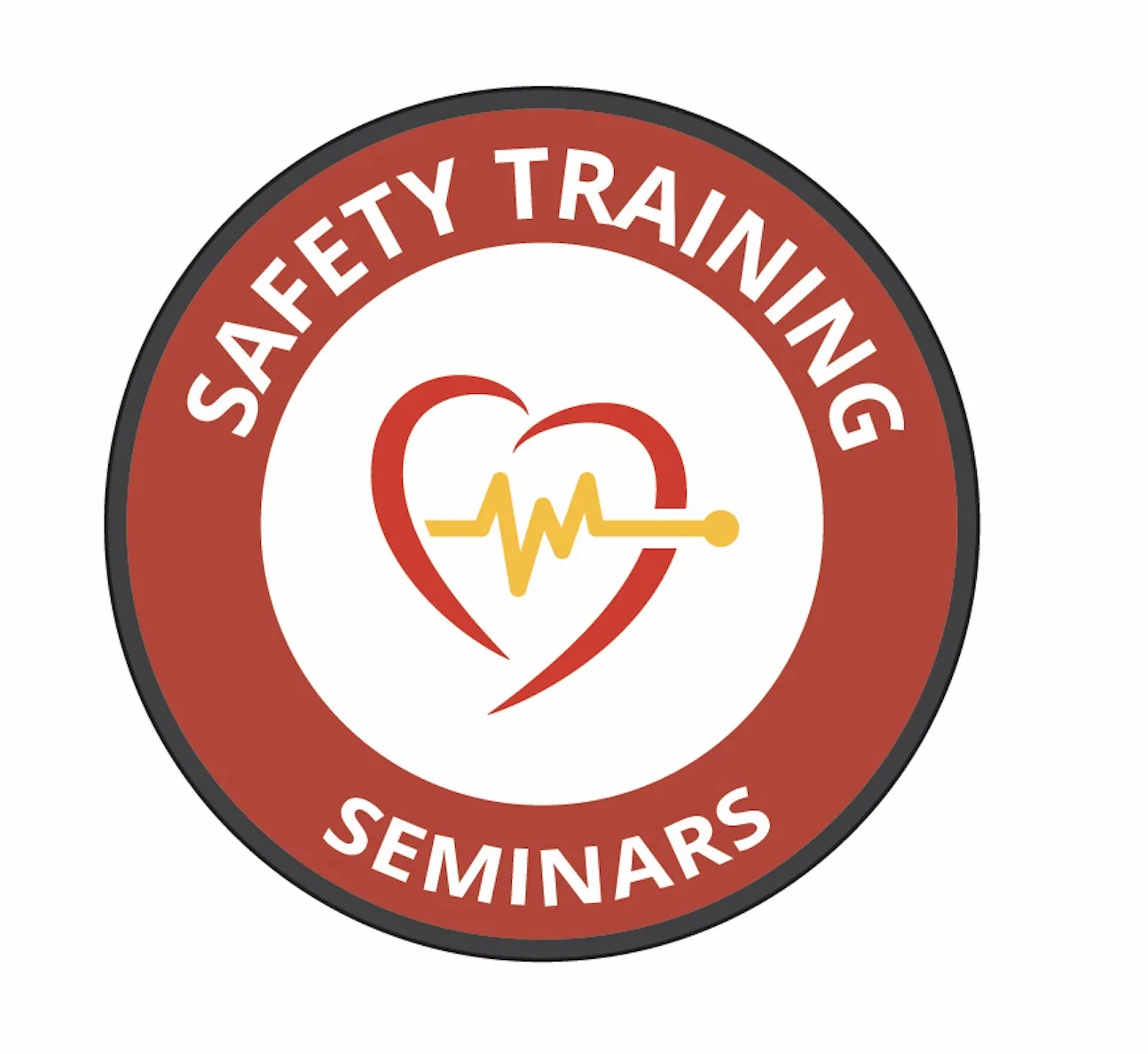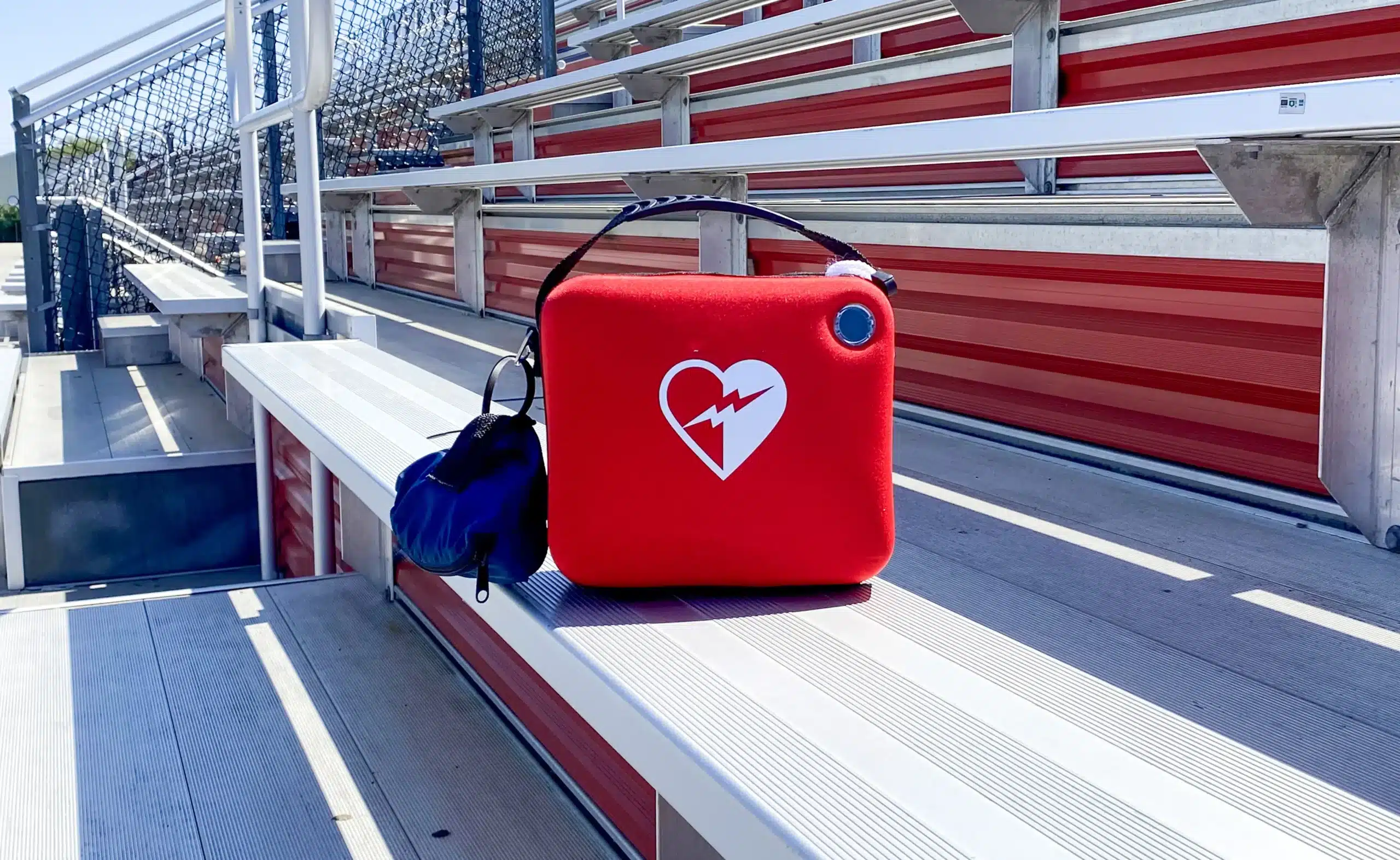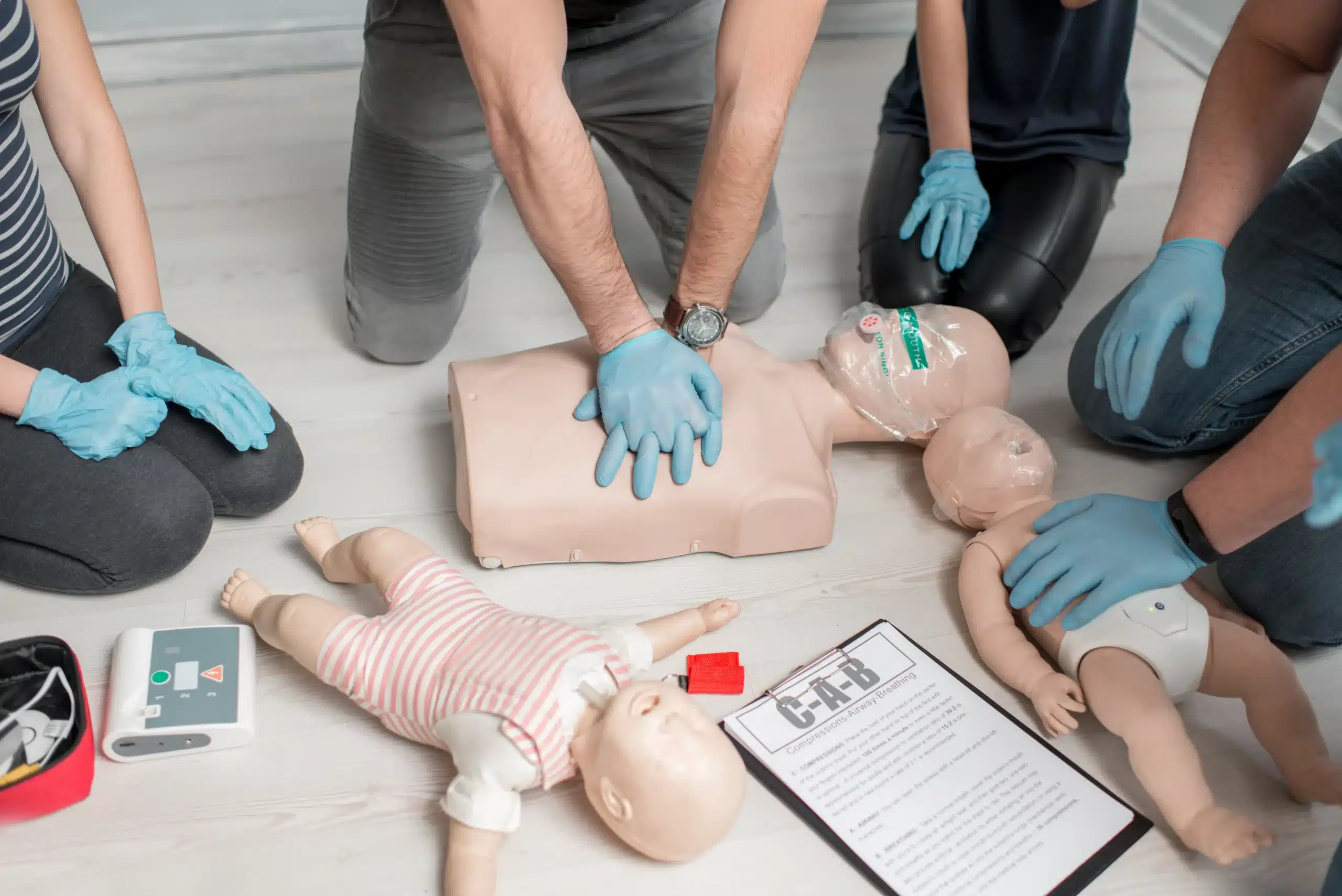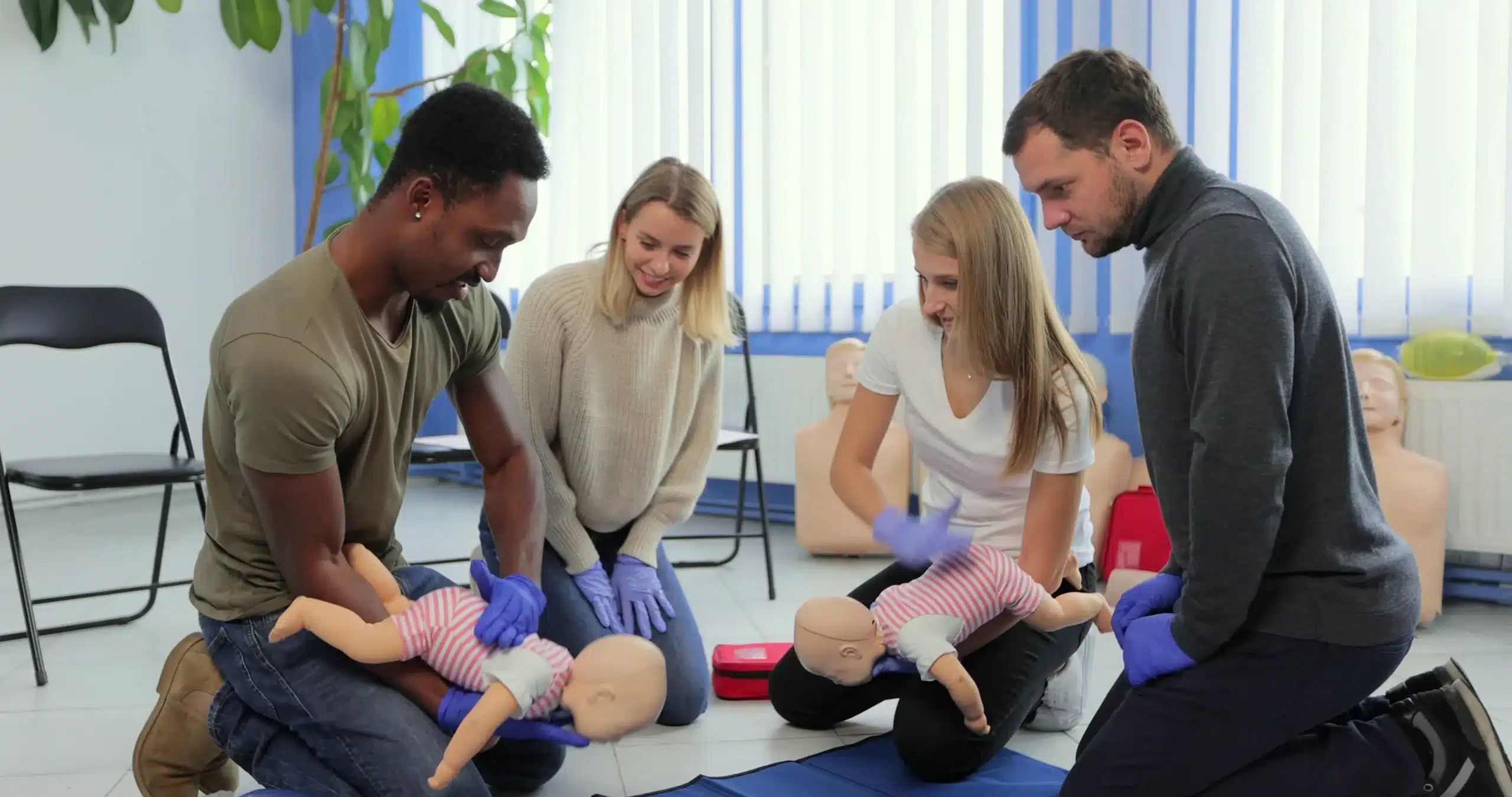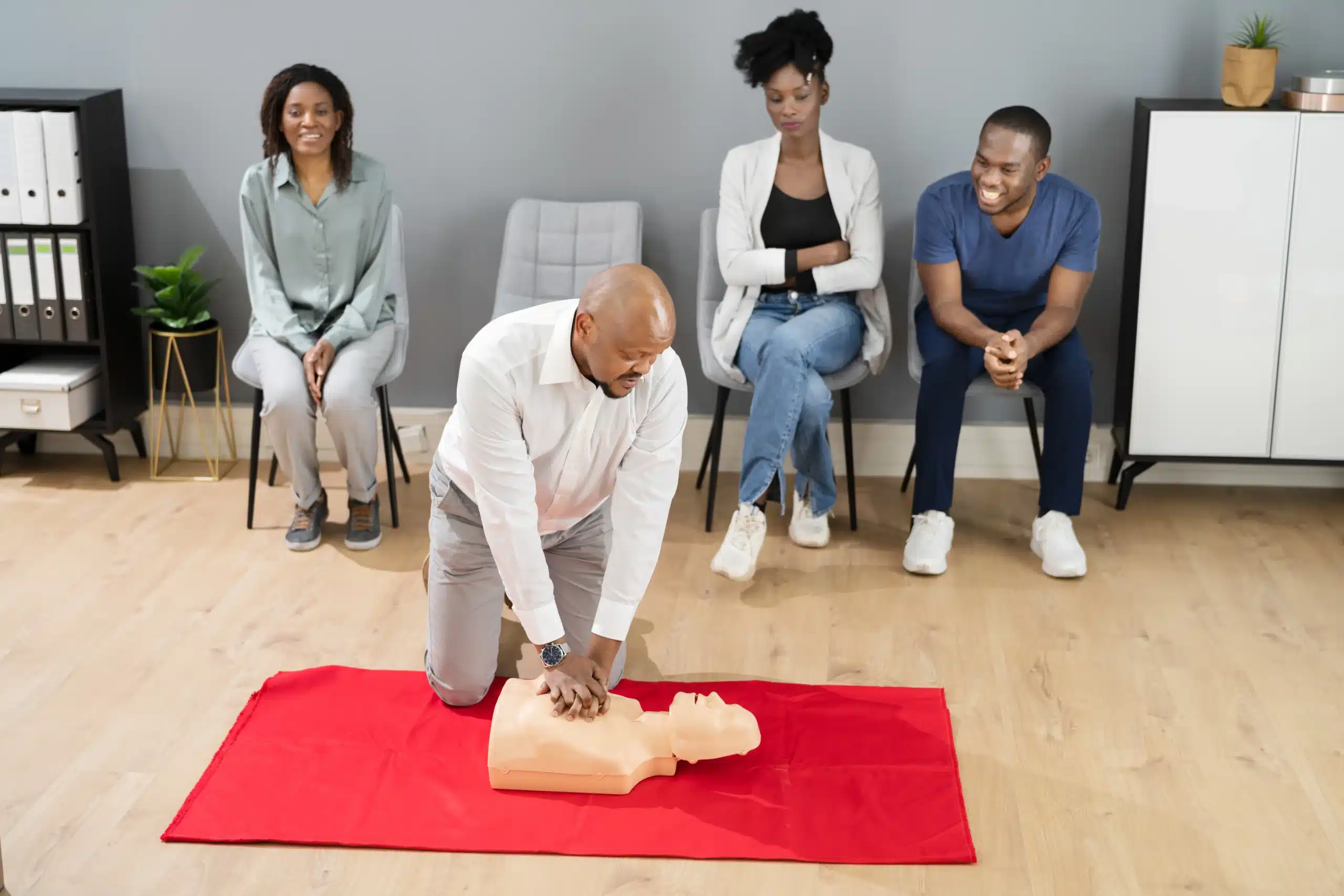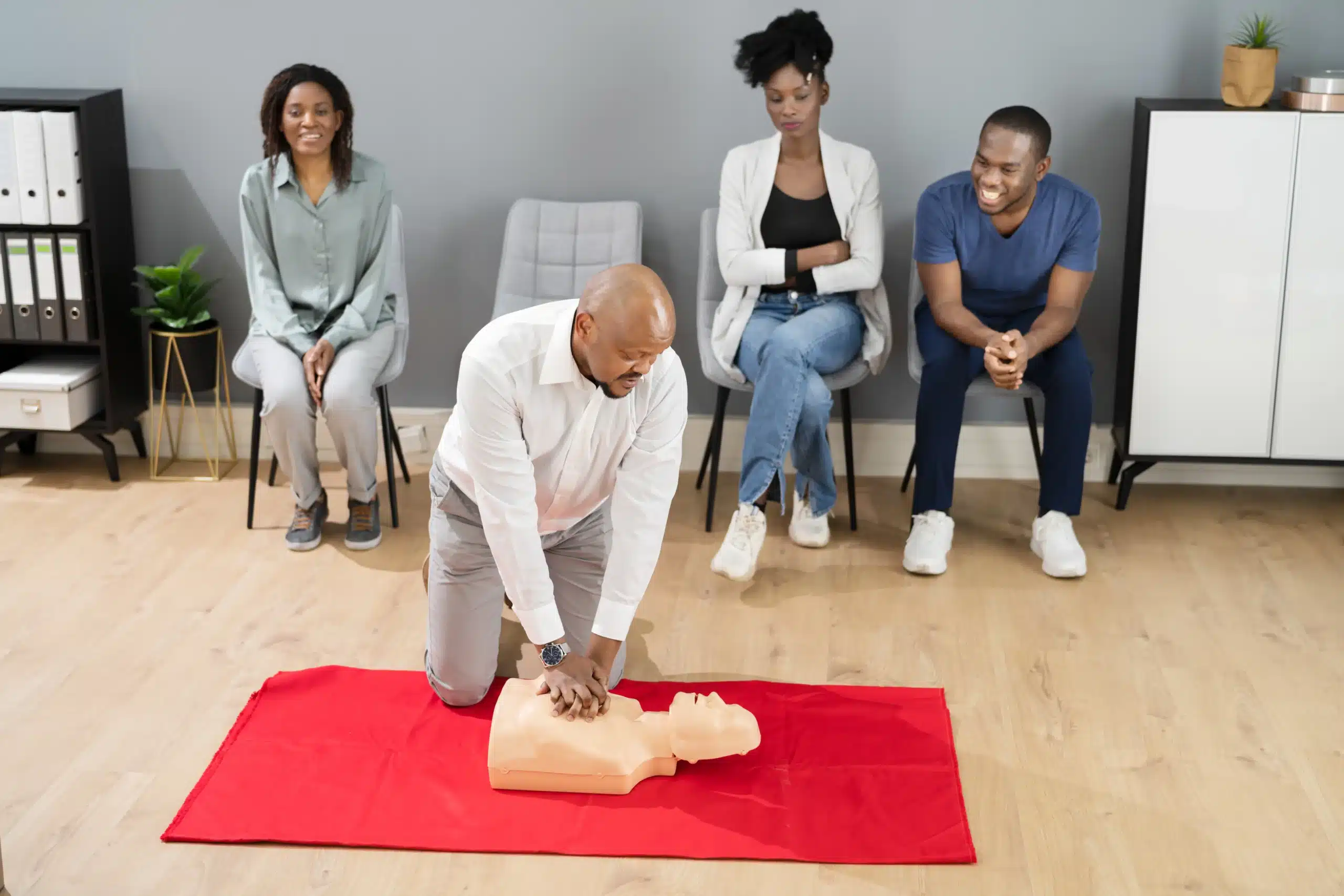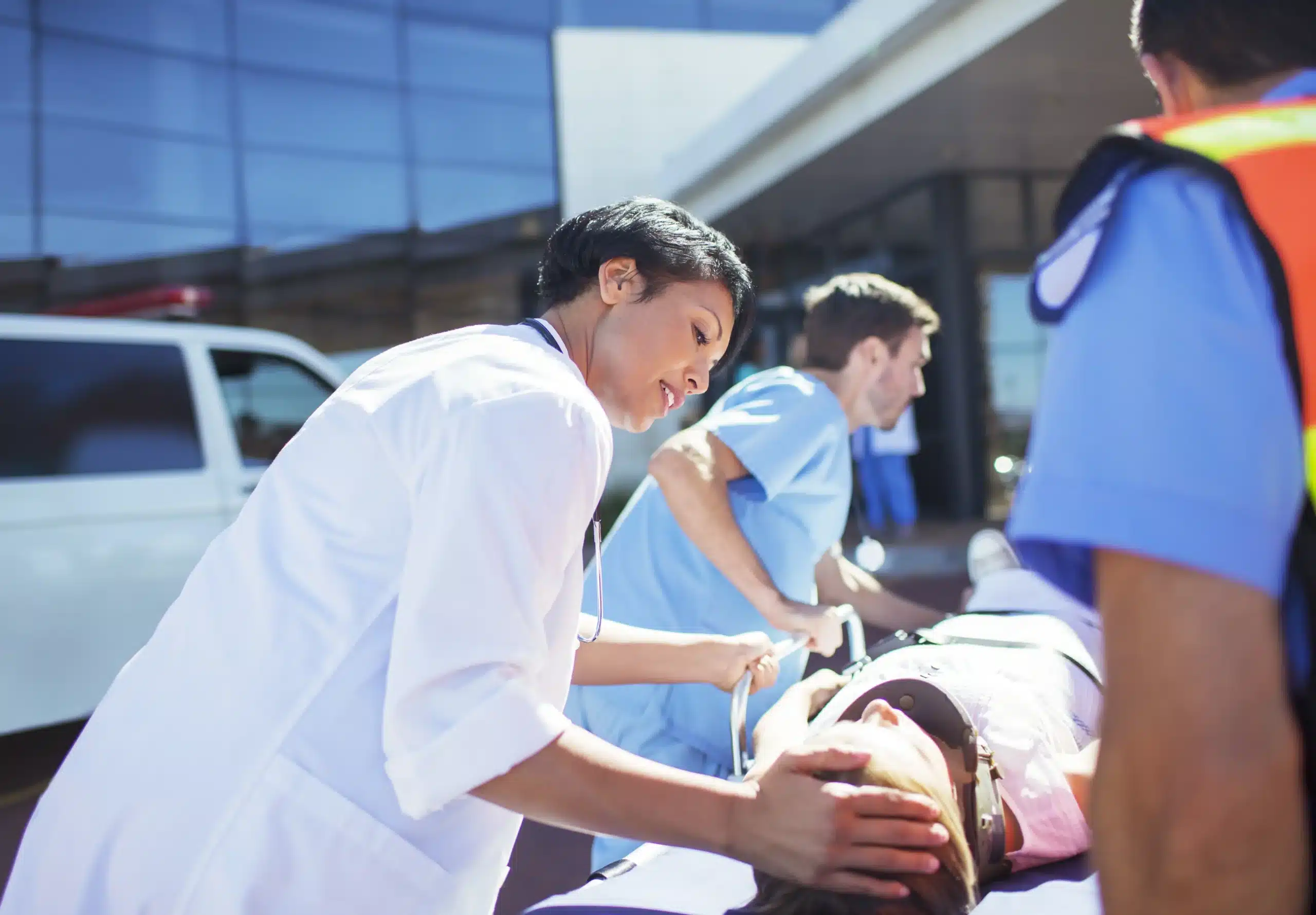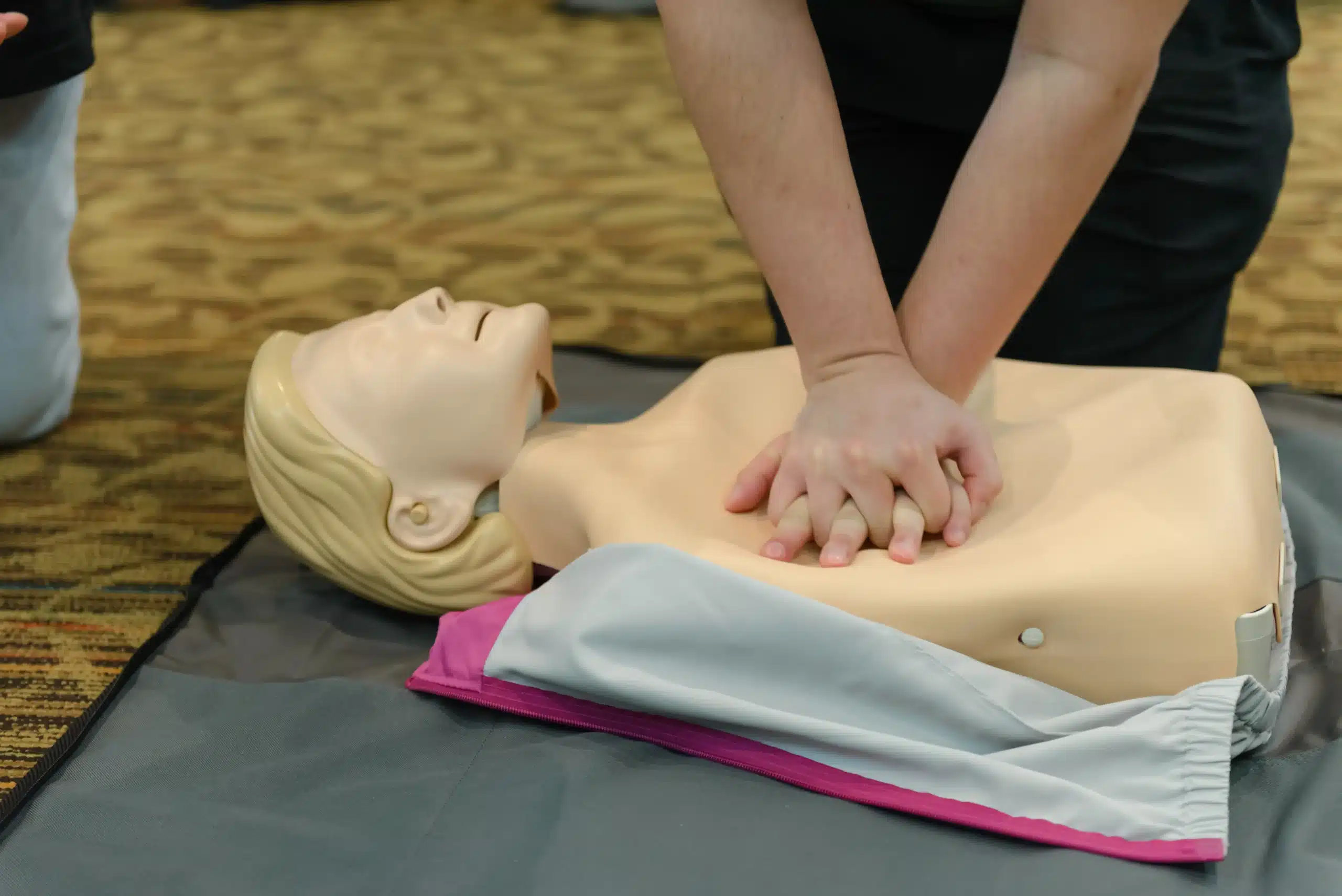Life has a way of throwing curveballs, and being prepared for medical emergencies is a skill that can truly empower you. If your BLS certification is nearing its expiration date, or maybe it’s already lapsed, you’re in the right place. This comprehensive guide walks you through the ins and outs of BLS recertification, making the process clear and manageable. We’ll explore everything from the core skills covered in a recertification course to finding the perfect “bls recertification near me” that aligns with your needs. Whether you’re a healthcare provider or just want to refresh your life-saving skills, we’ll equip you with the knowledge and resources to confidently handle emergencies.
Key Takeaways
- Stay current with life-saving skills: BLS recertification keeps your skills sharp and aligned with the latest guidelines. It’s valuable for everyone, not just healthcare professionals. Explore different course formats to find what works best for you.
- Choose a reputable provider: Select an AHA-certified provider with experienced instructors and comprehensive course materials. Compare costs and formats to find the right fit, and check reviews for valuable insights.
- Maximize your learning: Hands-on practice and continuing education opportunities are key to making the most of your recertification. Build your confidence and consider advanced certifications to further your skills.
What is BLS Recertification?
This section clarifies BLS recertification, explaining what BLS is and why staying recertified is so important.
What is BLS?
Basic Life Support (BLS) certification equips people with the skills to respond to life-threatening emergencies. It’s a crucial credential for healthcare professionals and anyone who wants to be prepared to help in a crisis. BLS training covers essential techniques like CPR, using an AED, basic airway management, and assisting someone who is choking. These skills can be critical in the moments before professional medical help arrives. There are some common myths about BLS certification, so it’s important to get the facts. You can learn more about BLS and find a CPR class near you on the Bay Area CPR website.
Why is Recertification Important?
BLS certification isn’t a one-time deal—it requires renewal, or recertification, usually every two years. This ensures your skills stay sharp and aligned with the latest American Heart Association guidelines. Recertification reinforces your knowledge and introduces any updated procedures. While it does take time, maintaining your BLS certification shows your commitment to providing excellent care and being prepared for emergencies. It’s an investment in your professional development and your ability to confidently handle critical situations. For those in the Bay Area, you can find more information on BLS recertification in this practical guide. Don’t let the idea that recertification isn’t necessary stop you from staying up-to-date on these vital life-saving skills.
Find BLS Recertification Courses Near You
Finding the right BLS recertification course can feel overwhelming, but with a little research, you can easily find one that fits your schedule and learning style. Here are a few places to start:
Bay Area CPR
Bay Area CPR offers the American Heart Association’s Basic Life Support (BLS) CPR training, including the HeartCode BLS blended learning option. They provide various courses tailored to healthcare professionals and laypersons alike. Their flexible scheduling and numerous locations throughout the Bay Area make it convenient to find a class near you. Check out their website for upcoming CPR classes.
American Red Cross
The American Red Cross is a trusted provider of BLS certification and renewals. They offer a range of AHA-certified courses, ensuring participants receive high-quality training. You can search for courses on their website and filter by location and date.
Local Hospitals and Medical Centers
Many hospitals and clinics offer BLS recertification courses for their staff and the surrounding community. Check with hospitals in your area, like UCSF or Stanford Health Care, to see if they offer BLS training. This can be a particularly convenient option if you work in healthcare.
Community Colleges
Community colleges often provide BLS recertification courses at competitive rates. These institutions typically offer various schedules to accommodate different needs. Check with your local community college or explore online course catalogs for available BLS classes.
Online Providers
For those with busy schedules, online BLS recertification courses offer a flexible learning experience. Providers like ACLS Medical Training offer 100% online BLS recertification, covering all the essential material. This allows you to complete the course at your own pace, fitting it in around your other commitments.
Compare Course Formats and Costs
Choosing the right BLS recertification course depends on your learning style, schedule, and budget. Let’s break down the different formats and their associated costs to help you make an informed decision.
In-Person Classes
In-person classes offer hands-on training and direct interaction with an instructor. You’ll practice skills in a real-time environment and receive immediate feedback. This format is ideal for those who learn best through tactile experiences and prefer personal guidance. In-person BLS courses often include online coursework, the skills test, and your certification card.
Online Options
Online BLS recertification courses provide flexibility for busy schedules. You can learn at your own pace and complete the coursework whenever it’s convenient. Online BLS recertification covers all the essential material. This format is perfect for self-directed learners who prefer to study independently.
Hybrid Courses
Hybrid courses combine online learning with in-person skills sessions. You’ll complete the cognitive portion of the course online, then attend a shorter in-person session to practice skills and demonstrate competency. The American Heart Association’s HeartCode BLS blended learning option is a popular choice for this format. Hybrid courses offer a balance of flexibility and hands-on learning.
Average Bay Area Prices
BLS recertification courses in the San Francisco Bay Area typically range from $50 to $150. The price depends on the course format, the training provider, and what’s included in the course fee. For more information on BLS pricing, review the costs for BLS certification.
Additional Fees
While the advertised price usually covers the core course content, be sure to ask about potential additional fees. Some providers may charge extra for materials, certification cards, or other services. Understanding the full cost upfront will help you avoid surprises and budget accordingly. Learn more about BLS renewal costs to prepare.
Prerequisites and Requirements
Before signing up for your BLS recertification course, it’s helpful to understand the requirements. Knowing what to expect upfront streamlines the process and ensures you’re fully prepared.
Current Certification Status
A key prerequisite for BLS recertification is holding a current BLS provider card or having one that recently expired. Most providers, including the American Red Cross, allow a grace period (often around 30 days) after expiration. This means you can still recertify even if your card is a few weeks out of date. Double-check with your chosen provider to confirm their specific policy.
Required Documentation
While the specific documents may vary slightly between providers, be prepared to verify your current certification status. This might involve presenting your current BLS provider card, or accessing your digital certification record. Some organizations offer online verification tools or customer support to assist with confirming your credentials. You can check your BLS certification status online through the AHA.
Time Commitment
BLS recertification courses are designed to refresh your essential lifesaving skills efficiently. Plan for a time commitment of roughly 2.5 to 4.5 hours for the course itself. The exact duration can depend on factors like the training provider, course format (in-person vs. blended learning), and any additional modules or assessments included. Since BLS certification is typically valid for two years, it’s a good idea to mark your renewal date on your calendar and begin researching recertification options a few months in advance. This gives you ample time to find a course that fits your schedule and preferred learning style.
Choose the Right Provider
Finding the right BLS recertification provider involves a little research, but it’s worth the effort. A quality provider can make all the difference in how well you retain the information and your confidence in using those skills. Here’s what to consider:
Accreditation and Certification
First things first, confirm the provider’s accreditation. The American Heart Association (AHA) is a leading authority in CPR training. Make sure your provider offers AHA-certified courses so your recertification is valid and widely recognized. This is especially important if your workplace requires AHA certification.
Instructor Qualifications
Look for instructors with extensive experience and strong credentials. Ideally, they should have a background in healthcare and a passion for teaching. Experienced instructors can offer real-world insights and create engaging learning experiences. For example, providers like Bay Area CPR emphasize hands-on training and real-world scenarios, which can be incredibly valuable in preparing you for actual emergencies.
Course Content and Materials
A good BLS recertification course covers more than just the technical skills. It should also equip you with the knowledge and confidence to handle medical emergencies effectively. This includes training on using an AED, managing airways, and understanding the latest CPR guidelines. Review course descriptions and materials to ensure they are comprehensive and up-to-date. BLS certification courses often include these essential elements.
Reviews and Ratings
Word-of-mouth can be incredibly helpful. Ask colleagues or friends for recommendations. Online reviews on sites like Yelp can also offer valuable insights into other students’ experiences. Reading reviews can give you a sense of the instructor’s teaching style, the course’s effectiveness, and the overall learning environment.
What to Expect in Your BLS Recertification Course
Getting ready to renew your BLS certification? Here’s a preview of what you’ll cover, so you can walk into your recertification course feeling confident and prepared.
Key Skills and Techniques
BLS recertification courses cover core life-saving techniques. You’ll review how to recognize and respond to life-threatening emergencies, including cardiac arrest and respiratory distress. Expect a refresher on high-quality CPR for adults, children, and infants, including the use of automated external defibrillators (AEDs). Your course will also cover basic airway management and techniques for assisting someone who is choking. You’ll also learn how to help someone who is choking.
Hands-On Practice
BLS recertification isn’t just about reviewing the theory—it’s about honing your skills. The best courses emphasize hands-on training, giving you the chance to practice CPR and other techniques in realistic scenarios. Providers in the San Francisco Bay Area often incorporate simulations and real-world case studies to help you build muscle memory and confidence. This practical experience is key to effectively applying your skills under pressure.
Assessment Methods
Your BLS recertification course will typically involve both practical skills demonstrations and a written exam. You’ll need to demonstrate proficiency in the techniques you’ve reviewed, showing that you can perform CPR and use an AED correctly. The written exam tests your understanding of BLS principles and protocols. Successfully completing both components is required to renew your American Heart Association BLS certification.
Common BLS Recertification Misconceptions
Let’s clear up a few common misconceptions about BLS recertification. These misunderstandings can prevent people from getting the training they need to respond confidently in emergencies.
“It’s Only for Healthcare Professionals”
It’s easy to assume that BLS certification is only for doctors and nurses, but that’s not the case. While it’s certainly a cornerstone of their training, BLS certification is valuable for anyone who might need to respond to a medical emergency. Think about teachers, coaches, lifeguards, and even parents—anyone who wants to be prepared to help in a crisis. The skills you learn in a BLS course, like using an AED, opening someone’s airway, and helping someone who is choking, are essential life skills that can make a real difference. These skills empower individuals to provide immediate assistance, potentially saving lives, as discussed in Medtigo’s article on common BLS misconceptions.
“Online Courses Aren’t as Credible”
Another misconception is that online BLS courses are somehow less credible than in-person classes. This simply isn’t true. Many respected organizations, including the American Heart Association, offer online BLS courses that meet the same high standards as traditional classroom training. These online options offer flexibility and convenience, making them a great choice for busy people. You’ll learn the same material and receive the same certification, whether you choose an online or in-person course.
“Recertification Isn’t Necessary”
Finally, some people believe that once they’re certified, they’re good to go forever. Unfortunately, that’s not how it works. BLS guidelines and best practices are updated regularly, so recertification is essential to stay current. BLS certification is typically valid for two years, and renewing it ensures you’re always equipped with the most up-to-date knowledge and techniques. Think of it like renewing your driver’s license—it’s a periodic check-in to make sure you’re still prepared.
Make the Most of Your BLS Recertification
Getting recertified isn’t just a checkbox; it’s a chance to refresh crucial skills and boost your confidence in emergencies. Here’s how to maximize the value of your BLS recertification:
Apply Skills in Real-World Scenarios
Your BLS recertification course offers more than just updated knowledge—it’s a chance to practice techniques in realistic scenarios. Many providers, like Bay Area CPR, emphasize hands-on training, walking you through simulated emergencies. This practical experience bridges the gap between theory and practice, building the muscle memory and quick thinking you need to respond effectively under pressure. Safety Training Seminars points out how valuable hands-on training is for BLS renewal courses. This focus on practical application is invaluable, ensuring you’re truly prepared for any situation.
Continuing Education Opportunities
BLS recertification is also a gateway to further learning. The healthcare landscape is constantly evolving, and staying up-to-date on the latest guidelines and best practices is essential. Use your recertification as a springboard to explore advanced certifications like ACLS (Advanced Cardiovascular Life Support) or PALS (Pediatric Advanced Life Support). Understanding the principles of BLS is fundamental for any healthcare provider, and Smart Sim Registration clarifies some common misunderstandings. Plus, ongoing education helps dispel common myths about BLS, allowing for a clearer understanding of its importance. By continually expanding your skillset, you not only enhance your professional credentials but also contribute to better patient care.
Frequently Asked Questions
How often do I need to recertify my BLS certification? BLS certification typically needs renewal every two years. This timeframe ensures your skills and knowledge remain current with the latest guidelines from organizations like the American Heart Association. Keeping your certification up-to-date allows you to respond confidently and effectively in emergencies.
What’s the difference between online and in-person BLS recertification courses? Both online and in-person BLS recertification courses cover the same core content and lead to the same certification. The main difference lies in the learning experience. Online courses offer flexibility, allowing you to learn at your own pace and on your own schedule. In-person classes provide a more interactive environment with hands-on practice and direct feedback from an instructor. The best choice for you depends on your learning style and schedule.
What if my BLS certification has already expired? Many BLS providers allow a short grace period after your certification expires, often around 30 days. If your card is only a few weeks past its expiration date, you may still be eligible for recertification. It’s always best to check with your chosen provider to confirm their specific policy on expired certifications.
How much does BLS recertification cost in the Bay Area? The cost of BLS recertification in the San Francisco Bay Area typically ranges from $50 to $150. The exact price depends on several factors, including the course format (online, in-person, or blended), the training provider, and any additional materials or services included in the course fee. Contacting different providers and comparing their offerings is a good way to find a course that fits your budget.
What are the prerequisites for taking a BLS recertification course? The main prerequisite for BLS recertification is holding a current or recently expired BLS provider card. You’ll likely need to provide documentation to verify your previous certification. This might involve showing your current provider card or accessing your digital certification record. Some providers may have additional requirements, so it’s always a good idea to check with them directly before registering for a course.
